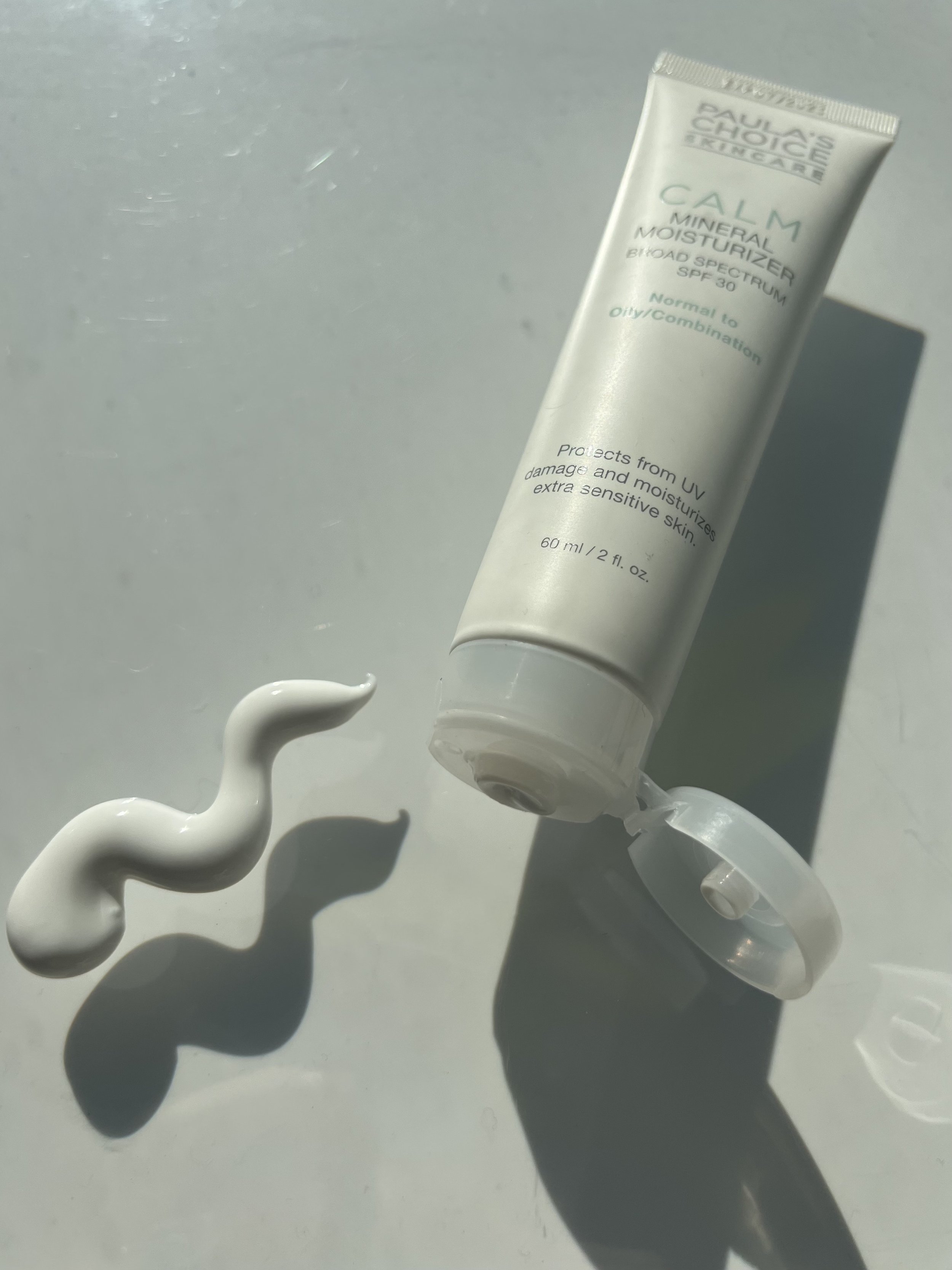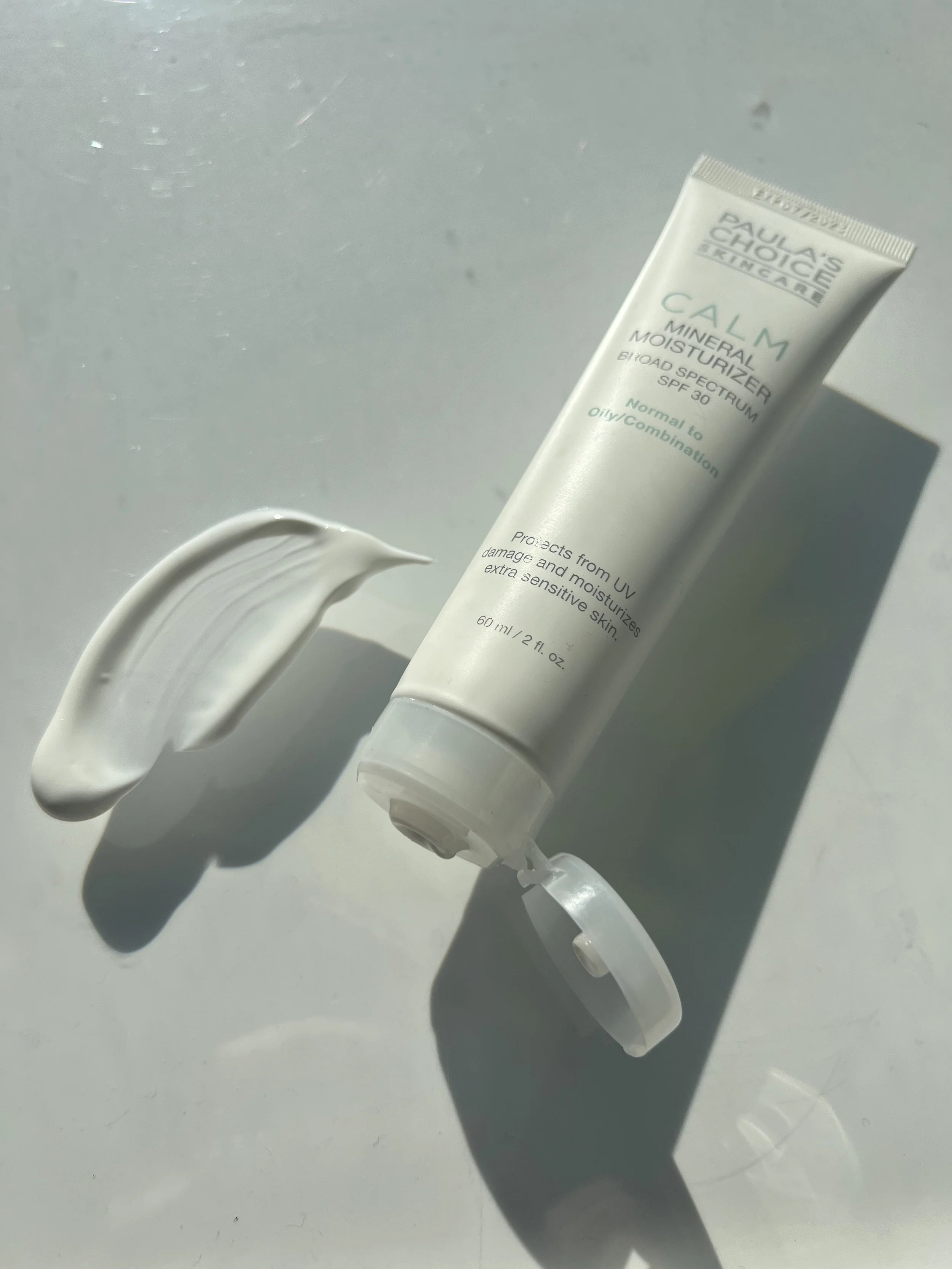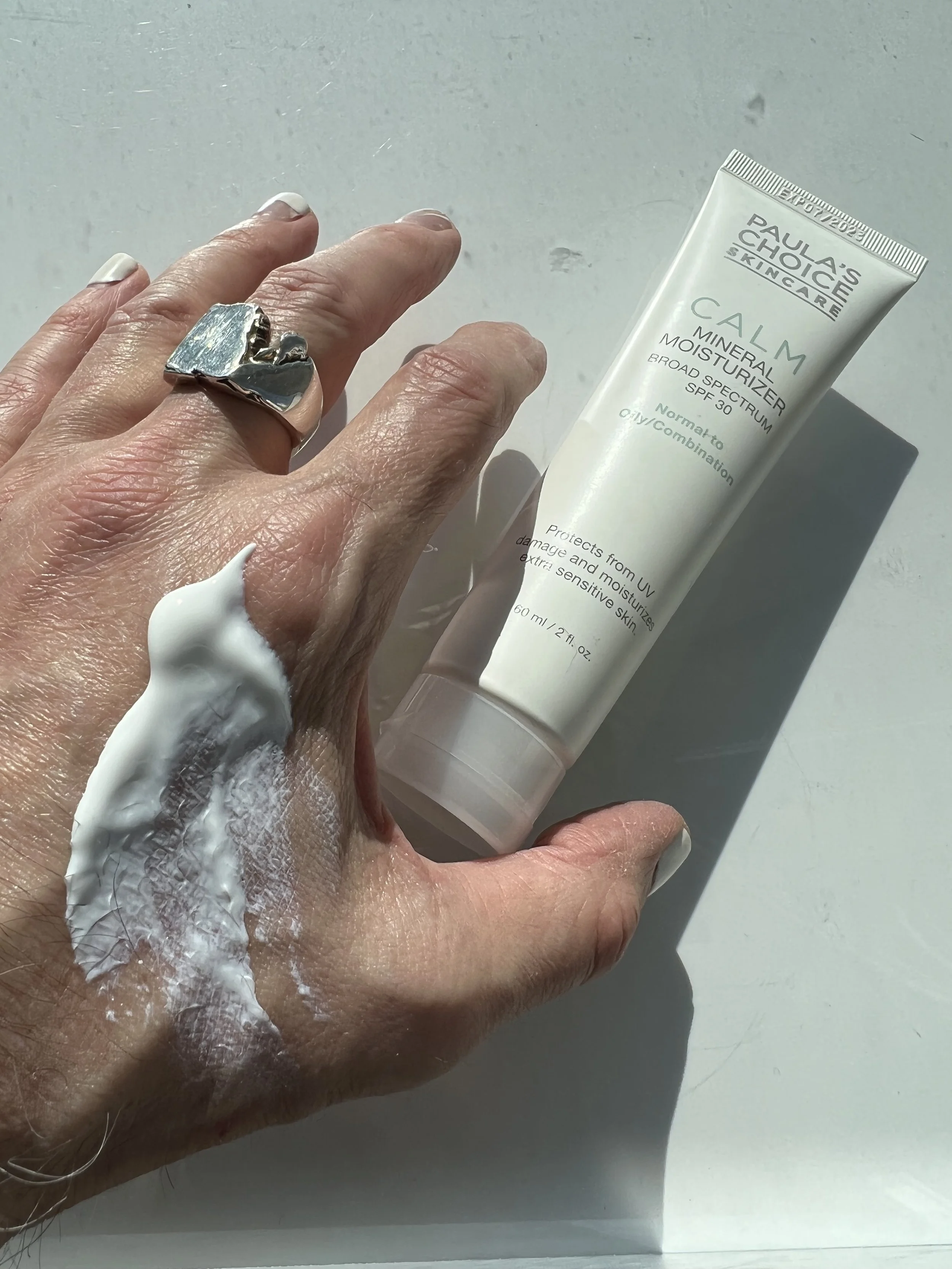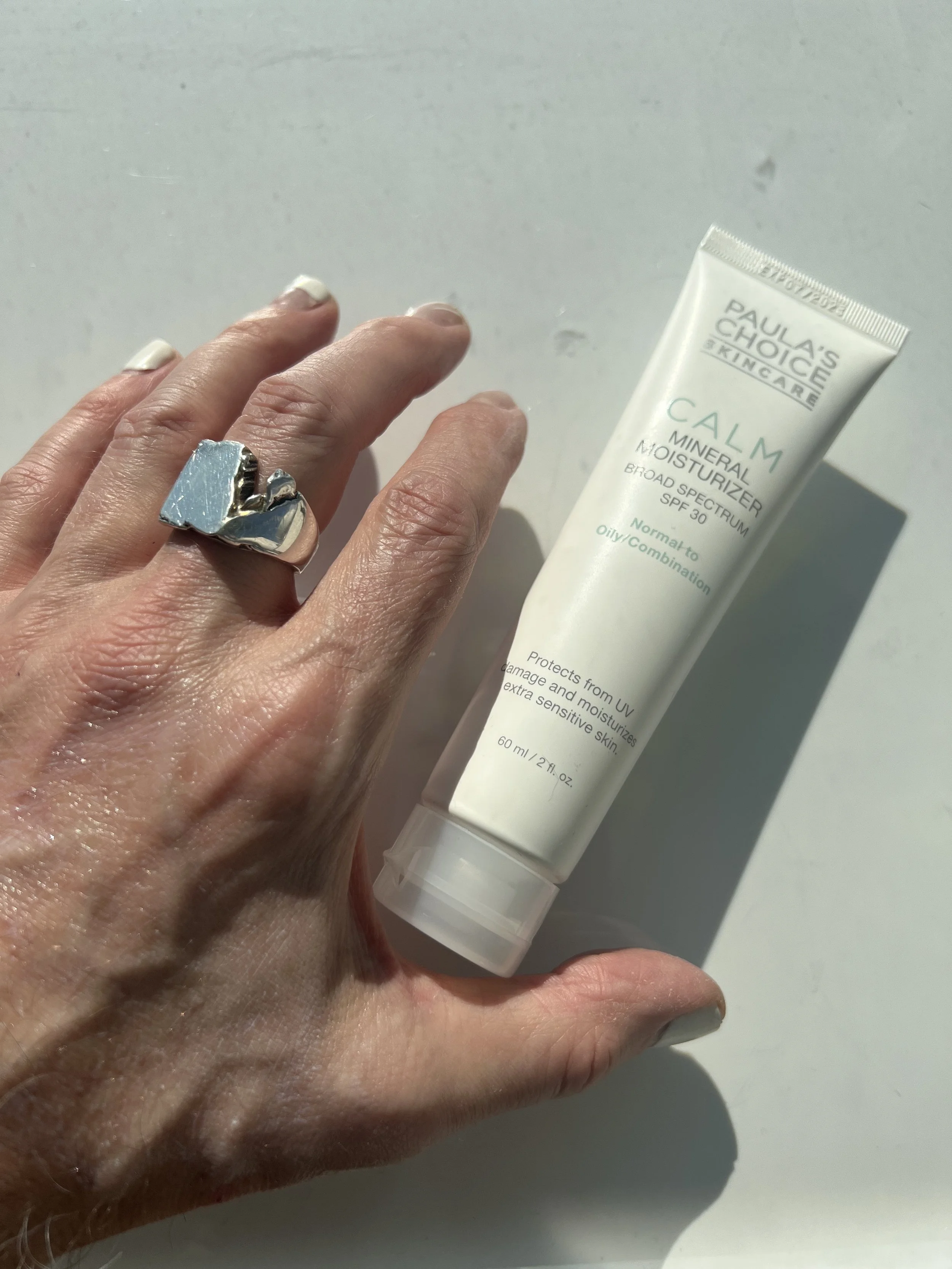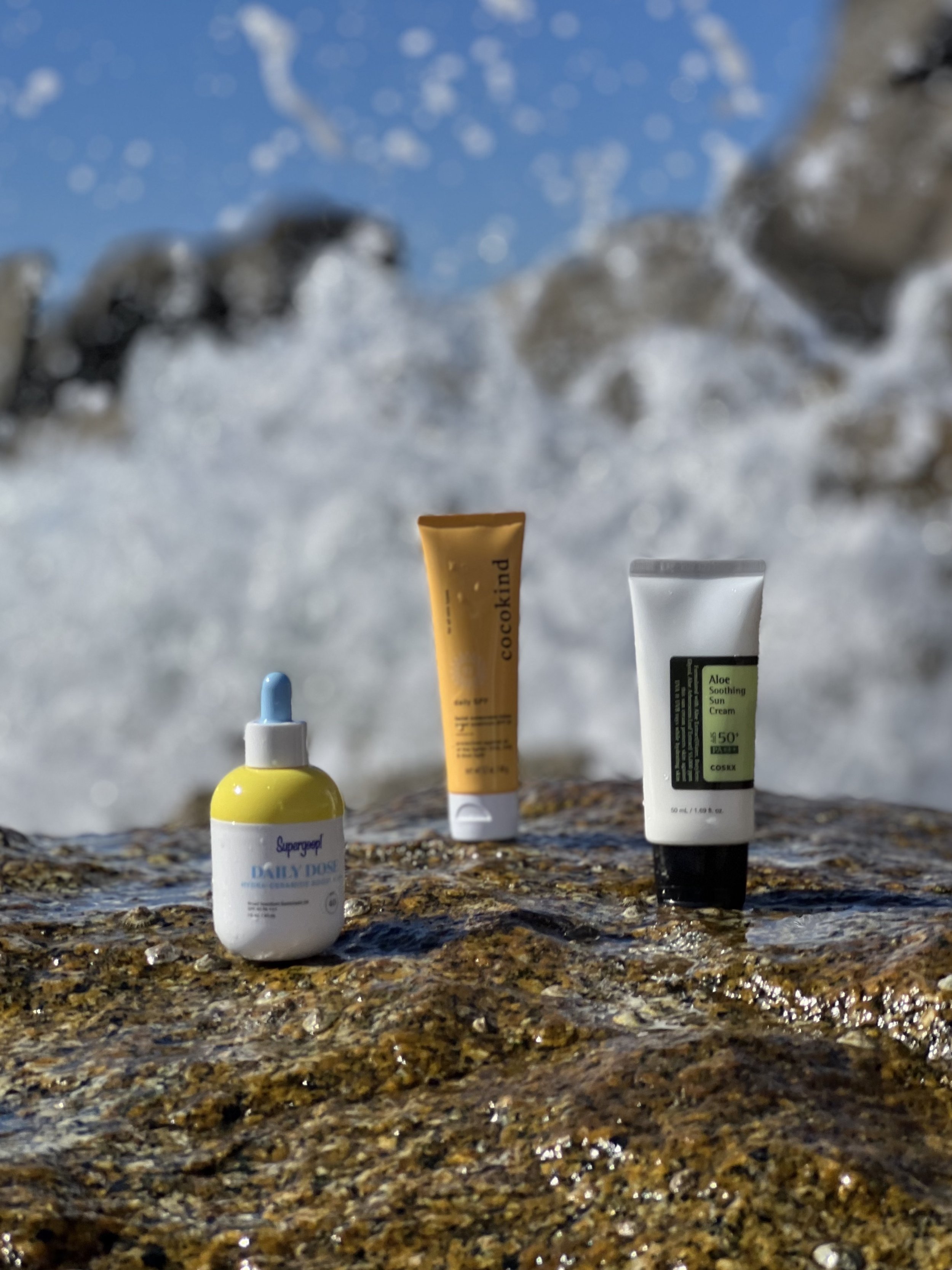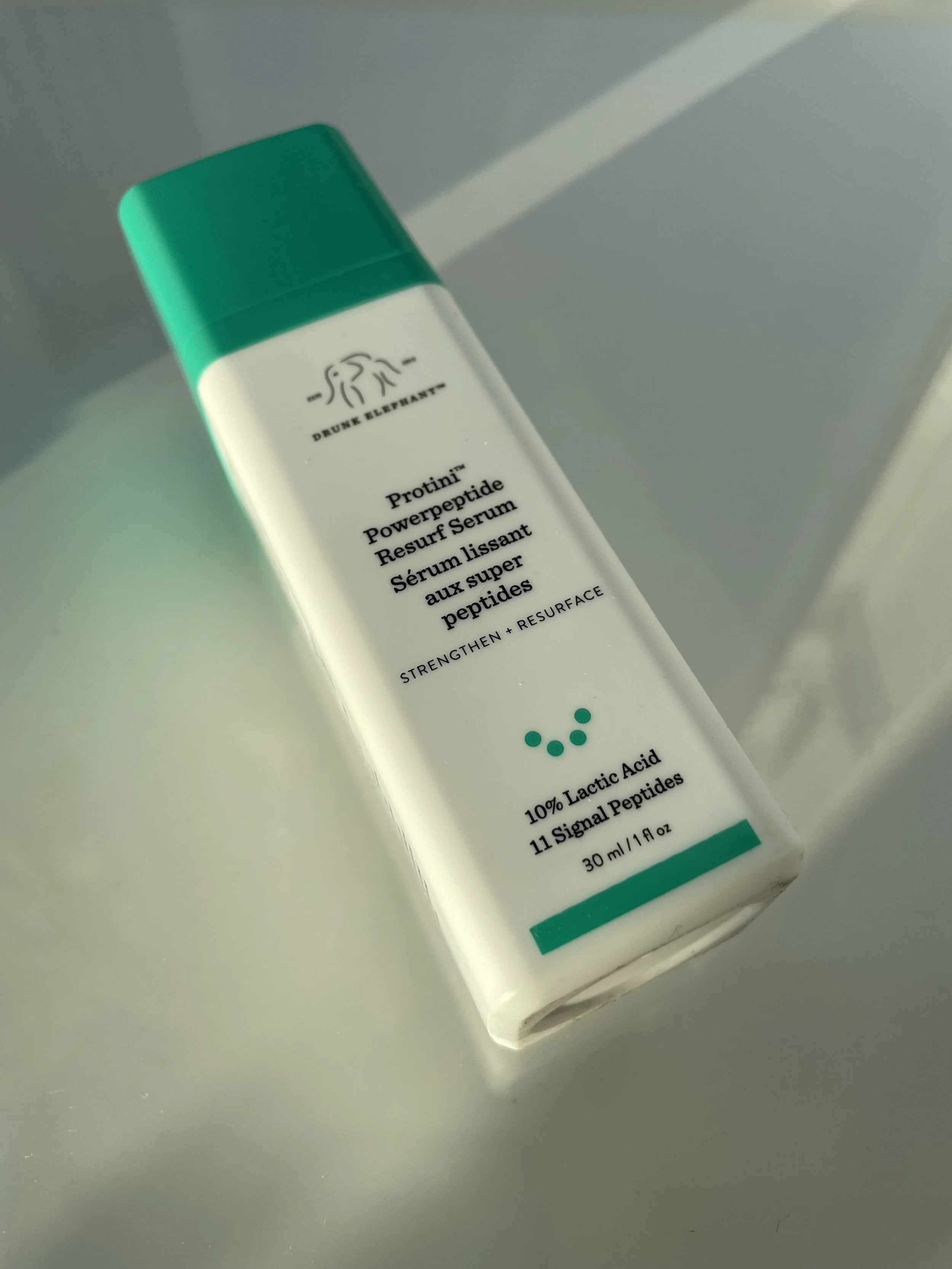PRODUCT REVIEW: PAULA’S CHOICE REDNESS RELIEF SPF 30 MINERAL MOISTURIZER FOR NORMAL TO OILY SKIN - BEST FACIAL SUNSCREEN, BEST SUNSCREEN FOR OILY SKIN
PAULA’S CHOICE | REDNESS RELIEF SPF 30 MINERAL MOISTURIZER FOR NORMAL TO OILY SKIN
Be sure to catch my top picks of the best sunscreens for face on the Skincarma Blog here.
—
I consider myself one of the biggest Paula’s Choice fans. So it’s funny to me that I can still discover products from Paula’s Choice that I haven’t tried yet.
Especially a sunscreen!
There’s probably no brand except Supergoop! that I trust more for a daily sunscreen than Paula’s Choice.
So I’m hyped to (finally!) try the Redness Relief SPF 30 Mineral Moisturizer. There are actually two formulations: one for oily skin and one for dry skin. Both are part of the Calm collection, formulated to “pamper sensitive, reddened skin” with “a redness-minimizing mix of soothing plant extracts, antioxidants, and peptides work to calm sensitive skin.”
The Best Sunscreens For Face
I don’t consider myself having sensitive skin; rather, I can experience sensitized skin on occasion — admittedly self-inflicted. The Redness Relief SPF 30 Mineral Moisturizer seems ideal for anyone in either camp.
Redness Relief is made with two common mineral sun filters: Titanium Dioxide and Zinc Oxide. What’s uncommon about Redness Relief is the formula’s cocktail of skin-soothing actives: Allantoin, Chamomile Flower Extract, Green Tea Leaf Extract, Licorice Root Extract, and Aloe Leaf Juice. All are tried-and-true ingredients for calming irritation. Combining them isn’t a breakthrough, but it’s ideal for very sensitive skin.
How Much UV Is Blocked by Sunscreen and What Percent of UV Rays Are Blocked by Sunscreen?
SPF 15 blocks 93% of UVB rays
SPF 20 blocks 95% of UVB rays
SPF 30 blocks 97% of UVB rays
SPF 50 blocks 98% of UVB rays.
So, the difference between SPF 30 and SPF 50 is about 1 percent.
What’s the Difference between Mineral and Chemical Sunscreens?
For some real insights, there’s an excellent article by the Paula’s Choice Research Team titled, Mineral vs. Synthetic Sunscreen Ingredients available here. In the piece, the experts explain the differences and benefits between mineral and chemical sunscreens — and even dispel a myth or two:
“The two types of sunscreen ingredients are mineral and synthetic [chemical], and both are equally protective. Further reassuring is that each can be included in formulas created for every skin type. For example, if you have normal to oily skin, there are weightless, non-greasy options; if you have normal to dry skin, it’s possible to find skin-smoothing, hydrating SPF products.
What’s the Difference Between Mineral and Synthetic Sunscreen Ingredients?
The differences aren’t about which type is more effective; rather, it comes down to personal preference and how sensitive your skin is—mineral sunscreens are considered the most gentle options.
Mineral sunscreens: There are only two mineral sunscreen ingredients: titanium dioxideand zinc oxide. They work in skin's uppermost layers to both absorb and, to a lesser extent, deflect and scatter the sun’s harmful rays. These mineral ingredients are sometimes referred to as physical sunscreens or physical blockers, although that’s not a factual representation of how they work.
Synthetic sunscreens: There are over 30 synthetic sunscreen ingredients, all of which absorb into the top layers of skin, where they work similar to mineral sunscreens: by scattering and deflecting the sun’s harmful rays, and by converting UV rays into heat and “deactivating” them. (Don’t worry, you won’t feel a thing.) Common synthetic sunscreen ingredients include oxybenzone, octinoxate, octisalate, and avobenzone. These are sometimes labeled “chemical sunscreens,” which is both misleading and false. All skin care ingredients, even water, are chemicals.
The oily skin version, the Redness Relief SPF 30 Mineral Moisturizer for Normal to Oily Skin, is heavy on hydrators, light on oils, and with a wonderfully lightweight, silky texture.
Calm Redness Relief SPF 30 Mineral Moisturizer for Normal to Dry Skin, the dry skin variation, is a bit heavier, contains the same skin-soothing cocktail and multiple replenishing plant oils, including Apricot Kernel Oil at ingredient number four.
If you have a concern for sensitive (or sensitized!) skin, check out the Paula’s Choice Redness Relief SPF 30 Mineral Moisturizers. They were made for you!
What I like about it: The Redness Relief SPF 30 Mineral Moisturizer for Normal to Oily Skin is one of the best sunscreens for oily skin that I’ve come across. And, I’m impressed with its potent blend of skin-soothing actives for calming sensitivity. If you have oily skin, blemish prone skin or sensitive skin, this one is for you.
If you have dry, sensitive skin, the Redness Relief SPF 30 Mineral Moisturizer for Normal to Dry Skin is the perfect option.
What I don’t like about it: Honestly, both formulas are near prefect sunscreens. The only improvement I can imagine is to bump up the sun protection to an SPF 50. I’m kind of surprised it’s not already there. But, as I shared earlier, the difference in the level of UV rays blocked by SPF 30 and SPF 50 is about one percent. That’s negligible.
Who it’s for: All skin types, especially sensitive, oily and acne-prone skins.
SHOP THE BLOG: Purchase the Paula’s Choice Redness Relief SPF 30 Mineral Moisturizer for Normal to Oily Skin for $31 here.
WATCH MY VIDEO REVIEW
MY SUMMER EMPTIES : SUNSCREENS, VITAMIN C SERUMS & MORE FACIAL SKIN CARE!
ON MY YOUTUBE CHANNEL HERE
WATCH MY VIDEO REVIEW OF
COOL CLEAN FACIAL SUNSCREENS TO KEEP US SAFE AND SMILING IN THE SUN
ON MY YOUTUBE CHANNEL HERE
WATCH MY VIDEO REVIEW
THE YEAR’S BEST VITAMIN C SERUMS WITH THE ORDINARY, CLINIQUE, BEAUTY STAT & MORE!
ON MY YOUTUBE CHANNEL HERE
WATCH MY VIDEO REVIEW
THE YEAR’S BEST VITAMIN C SERUMS WITH PAULA'S CHOICE, SUNDAY RILEY, THE INKEY LIST AND MORE!
ON MY YOUTUBE CHANNEL HERE
WATCH MY VIDEO REVIEW OF
SKINCARE HACKS: GLYCOLIC ACID IS THE NATURAL DEODORANT THAT WORKS!
ON MY YOUTUBE CHANNEL HERE
The Ingredient List of the Paula’s Choice Redness Relief SPF 30 Mineral Moisturizer for Normal to Oily Skin:
 so 0 0, Chamomilla Recutita Matricaria Flower Extract (Skin-Soothing)
so 0 0, Chamomilla Recutita Matricaria Flower Extract (Skin-Soothing)  so|aox 0 0, Camellia Sinensis Leaf Extract (Green Tea Extract/Skin-Soothing)
so|aox 0 0, Camellia Sinensis Leaf Extract (Green Tea Extract/Skin-Soothing)  aox|so, Glycyrrhiza Glabra Root Extract (Licorice Extract/Skin-Soothing)
aox|so, Glycyrrhiza Glabra Root Extract (Licorice Extract/Skin-Soothing)  so|sb, Alumina (Stabilizer) vc|abrasive/scrub, Aloe Barbadensis Leaf Juice (Hydration/Skin-Soothing)
so|sb, Alumina (Stabilizer) vc|abrasive/scrub, Aloe Barbadensis Leaf Juice (Hydration/Skin-Soothing)  so|h, Glycerin (Hydration)
so|h, Glycerin (Hydration)  sii|h 0 0, Panthenol (Skin Replenishing)
sii|h 0 0, Panthenol (Skin Replenishing)  so|h 0 0, Algae Extract (Skin Replenishing)
so|h 0 0, Algae Extract (Skin Replenishing)  emo|h, Lauryl PEG-9 Polydimethylsiloxyethyl Dimethicone emu|surf, Polyhydroxystearic Acid (Texture-Enhancing) emu, Triethoxysilylethyl Polydimethylsiloxyethyl Hexyl Dimethicone (Texture-Enhancing), Caprylyl Glycol (Preservative) h|emo, Butylene Glycol (Hydration) h|solv|vc 0 1, Diethylhexyl Carbonate (Stabilizer) emo, Triethoxycaprylylsilane (Texture-Enhancing), Disodium EDTA (Stabilizer) chel, Phenoxyethanol (Preservative) pres, Chlorphenesin (Preservative) pres|amic
emo|h, Lauryl PEG-9 Polydimethylsiloxyethyl Dimethicone emu|surf, Polyhydroxystearic Acid (Texture-Enhancing) emu, Triethoxysilylethyl Polydimethylsiloxyethyl Hexyl Dimethicone (Texture-Enhancing), Caprylyl Glycol (Preservative) h|emo, Butylene Glycol (Hydration) h|solv|vc 0 1, Diethylhexyl Carbonate (Stabilizer) emo, Triethoxycaprylylsilane (Texture-Enhancing), Disodium EDTA (Stabilizer) chel, Phenoxyethanol (Preservative) pres, Chlorphenesin (Preservative) pres|amicThe Ingredient List of the Paula’s Choice Redness Relief SPF 30 Mineral Moisturizer for Normal to Dry Skin:
 emo 0 1-2, Cyclopentasiloxane (Hydration) emo|solv, Glyceryl Stearate (Emollient) emo|emu 0 1-2, PEG-100 Stearate (Texture-Enhancing) surf|emu 0 0, Butylene Glycol (Hydration) h|solv|vc 0 1, Pentylene Glycol (Hydration) solv|h, Cetearyl Alcohol (Emollient) emo|vc|emu|surf 1 2, Dimethicone (Hydration) emo 0 1, Glycine Soja Sterols (Soybean/Emollient) emo, Vp/Eicosene Copolymer (Texture-Enhancing) vc, Avena Sativa Kernel Extract (Oat Extract/Skin-Soothing)
emo 0 1-2, Cyclopentasiloxane (Hydration) emo|solv, Glyceryl Stearate (Emollient) emo|emu 0 1-2, PEG-100 Stearate (Texture-Enhancing) surf|emu 0 0, Butylene Glycol (Hydration) h|solv|vc 0 1, Pentylene Glycol (Hydration) solv|h, Cetearyl Alcohol (Emollient) emo|vc|emu|surf 1 2, Dimethicone (Hydration) emo 0 1, Glycine Soja Sterols (Soybean/Emollient) emo, Vp/Eicosene Copolymer (Texture-Enhancing) vc, Avena Sativa Kernel Extract (Oat Extract/Skin-Soothing)  aox|so|emo|abrasive/scrub, Glycerin (Hydration/Skin Replenishing)
aox|so|emo|abrasive/scrub, Glycerin (Hydration/Skin Replenishing)  sii|h 0 0, Sodium Hyaluronate (Hydration)
sii|h 0 0, Sodium Hyaluronate (Hydration)  sii|h 0 0, Allantoin (Skin-Soothing)
sii|h 0 0, Allantoin (Skin-Soothing)  so 0 0, Tocopheryl Acetate (Vitamin E/Antioxidant) aox 0 0, Hydrogenated Lecithin (Skin Replenishing)
so 0 0, Tocopheryl Acetate (Vitamin E/Antioxidant) aox 0 0, Hydrogenated Lecithin (Skin Replenishing)  emo|emu, Tetrahexyldecyl Ascorbate (Vitamin C/Antioxidant)
emo|emu, Tetrahexyldecyl Ascorbate (Vitamin C/Antioxidant)  aox|sb, Superoxide Dismutase (Antioxidant)
aox|sb, Superoxide Dismutase (Antioxidant)  aox, Ubiquinone (Antioxidant)
aox, Ubiquinone (Antioxidant)  aox, Ceramide NG (Hydration/Skin Replenishing)
aox, Ceramide NG (Hydration/Skin Replenishing)  sii, Methicone (Hydration) emo, Palmitoyl Hexapeptide-12 (Texture-Enhancing)
sii, Methicone (Hydration) emo, Palmitoyl Hexapeptide-12 (Texture-Enhancing)  cci, PEG-10 Dimethicone (Texture-Enhancing) emu, Cucumis Sativus Fruit Extract (Cucumber Extract/Skin-Soothing)
cci, PEG-10 Dimethicone (Texture-Enhancing) emu, Cucumis Sativus Fruit Extract (Cucumber Extract/Skin-Soothing)  so|emo, Caprylic/Capric Triglyceride (Emollient) emo, Tribehenin (Emollient) emo, PEG-10 Phytosterol (Texture-Enhancing/Emollient) emu, Sorbitan Stearate (Texture-Enhancing) emu 1 0, Polyhydroxystearic Acid (Texture-Enhancing) emu, Alumina (Stabilizer) vc|abrasive/scrub, Polysorbate 20 (Stabilizer) emu|surf 0 0, Aluminum Stearate (Texture-Enhancing) col|vc, Xanthan Gum (Texture-Enhancing) vc, Caprylyl Glycol (Preservative) h|emo, Disodium EDTA (Stabilizer) chel, Ethylhexylglycerin (Preservative) pres, Phenoxyethanol (Preservative) pres, Chlorphenesin (Preservative) pres|amic
so|emo, Caprylic/Capric Triglyceride (Emollient) emo, Tribehenin (Emollient) emo, PEG-10 Phytosterol (Texture-Enhancing/Emollient) emu, Sorbitan Stearate (Texture-Enhancing) emu 1 0, Polyhydroxystearic Acid (Texture-Enhancing) emu, Alumina (Stabilizer) vc|abrasive/scrub, Polysorbate 20 (Stabilizer) emu|surf 0 0, Aluminum Stearate (Texture-Enhancing) col|vc, Xanthan Gum (Texture-Enhancing) vc, Caprylyl Glycol (Preservative) h|emo, Disodium EDTA (Stabilizer) chel, Ethylhexylglycerin (Preservative) pres, Phenoxyethanol (Preservative) pres, Chlorphenesin (Preservative) pres|amic


